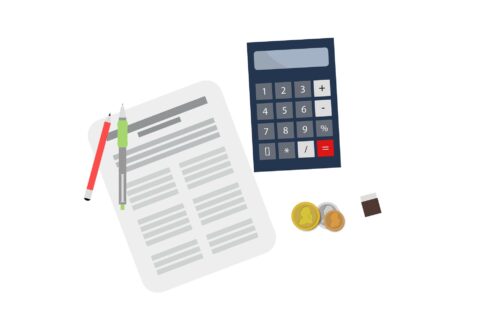A creditors’ voluntary liquidation (CVL) is a voluntary process initially instigated by a company’s directors. It is an alternative to the company being wound up by the court on a winding-up petition presented by a creditor of the company.
How do I enter into a CVL?
A CVL can only be entered into under the guidance of a licensed Insolvency Practitioner. An Insolvency Practitioner can give you the sound, practical advice you need when dealing with a company under financial distress.
Before appointment of the liquidator
Before the appointment of the liquidator, there is a board meeting of Directors or Decision of Sole Director. At that meeting, the directors (a quorum of which must attend or be present via telephone/internet) must conclude that it should take steps to place the company into CVL.
It is at this point that the directors must formally instruct a licensed Insolvency Practitioner to act on behalf of the company throughout the Liquidation process.
Unlike a creditor-led winding-up petition, the director can choose an Insolvency Practitioner. However, the practitioners should not have a material professional relationship with the company and cannot be the current auditors, the chosen practitioner should be neutral.
Notice to Shareholders and Creditors
Once a decision to enter the liquidation process has been made by the director(s), shareholders and creditors will be notified of the general meeting and Decision Date respectively. The meeting of the shareholders is usually held immediately prior to the meeting of creditors.
Shareholders meeting
Shareholders will be presented with a statement outlining the financial position of the company to establish the deficiency to those members. In order for the company to wind up and enter liquidation at least 75% of shareholders must agree to the process.
If, at that stage, the shareholders agree that the company is insolvent, it may resolve to place the company into liquidation. Additionally, shareholders, at this point, can confirm the directors’ choice of practitioner to act as liquidator.
Furthermore, a report is prepared by the Insolvency Practitioner providing a brief trading history, reason for its demise, extracts from the company’s recent accounts and a deficiency account, detailing financial movements and assumed financial movements between the date of the last accounts and the date of liquidation.
This report and the statement of affairs must be made available to creditors prior (no later than the date before) to the Decision Date.
Creditors meeting
There is no longer a requirement to hold a face to face creditors’ meeting, unless requested by at least 10% of creditors in value, 10% of creditors in number, or 10 creditors. If no such request is made, the Liquidation commences at 23:59 on the Decision Date, with the appointment of the liquidators being deemed approved.
The directors’ role
The company directors remain in control of the company affairs both after the board meeting and prior to the meetings of shareholders and creditors. The company can continue to trade during this time, allowing time to fulfil contracts and preserve the goodwill of the business. That being said, directors are under a duty to not do anything that might be detrimental to the general body of creditors and must act in the best interest of the company creditors and shareholders.
Matters to take into consideration include:
- – No preferential treatment to particular creditors.
- – The continuation of trading does not better the position of any secured creditor to the detriment of unsecured creditors.
- – No credit purchases are made.
- – No overdrawn bank account should be used
- – No company assets should be disposed of, apart from meeting essential costs and expenses.
After the appointment of the liquidator
Upon liquidation, the directors’ powers cease automatically, at this stage in the process there is no formal requirement on them to file accounts, etc. However, there is still a responsibility to assist the liquidator with their enquiries and, failure to do so, may result in the directors facing disqualification proceedings.
The liquidator’s role
The Insolvency Practitioner will liaise with creditors and work to resolve any outstanding issues related to creditor claims during the liquidation. As well as take any appropriate actions necessary to realise the company assets in order for the proceeds to be distributed to creditors.
The liquidator has two distinct roles:
- – to realise the company assets with the hopeful intention of paying creditors, and
- – to investigate the affairs of the company and its directors.
Often a professional valuer is drafted in to establish the value of the assets of the company and to establish if the assets can be sold. Sometimes, even if physical assets are nominal, the goodwill of the business, if realised quickly may still have a value.
It is possible for the directors of the insolvent company to purchase company assets, however, the sale should be negotiated through the Insolvency Practitioner and purchased at market value.
Furthermore, the Insolvency Practitioner will also be responsible for the following:
- – Collecting outstanding book debts.
- – Handling employee claims.
- – Issuing the necessary reports to government agencies.
- – Distributing available funds to creditors.
Where funds are being allocated to creditors, the Insolvency Act 1986 sets out an order of priority in which to follow. Secured creditors with a fixed charge are first in line for payment, followed by preferential creditors (including staff due arrears of wages), and then secured creditors with a floating charge.
Following which, unsecured creditors, such as suppliers, customers, and HMRC will be paid.
Noteworthy
Directors should be aware that they are prohibited from acting as a director of any business with a similar sounding name or trading style under section 216 of the Insolvency Act 1986 (IA 1986).
Exit from CVL
Once the company’s affairs are wound up, as per section 106, Insolvency Act 1986, the liquidator must present a final account of the winding up, outlining how it has been conducted and how its assets have been distributed.
Additionally, a copy of the final account must be sent to the company’s members and creditors (other than those who opted-out), before the end of the 14 day period that starts with the day the final account is made up to be sent to.
Furthermore, a copy of the final account must also be sent to the Registrar of Companies within seven days of the end of the period in which creditors may object to the liquidator’s release. If no objection occurs, the company will be automatically dissolved three months from the date of registration of the final account with the Registrar of Companies.
What happens after the CVL?
Upon completion of the CVL, and once the company has been struck off the register held at Companies House, any liabilities which remain unpaid by the company will be written off. The only exception being any debts that were personally guaranteed.
During liquidation, the liquidator is under obligation to investigate any actions taken by the company director, including former directors within the last 3 years. Should it be uncovered that they did not fulfil their fiduciary duties while knowingly insolvent or proceeded with transactions which were to the detriment of creditors and challengeable, they may be found guilty of wrongful trading, fraudulent trading, or misfeasance.
As a result, the directors could be held personally liable for some or all the company’s debts. Furthermore, they could be disqualified from acting as the director of any future company for up to 15 years.
However, this is a very rare occurrence with most directors free to move forward and set up new businesses as they wish.
Choose Griffin and King
Call Griffin and King today to find out how we can help you and your company navigate its way through a CVL. We can offer unparalleled advice no matter what the current situation of your business is. We are Business Rescue Specialists and offer no-nonsense, clear advice to business owners and individuals who are in financial difficulties.
All the latest Business News brought to you by AIM Internet.
AIM Internet specialise in digital marketing services that provide strategic online marketing solutions to grow your business. Contact us today to find out more.




